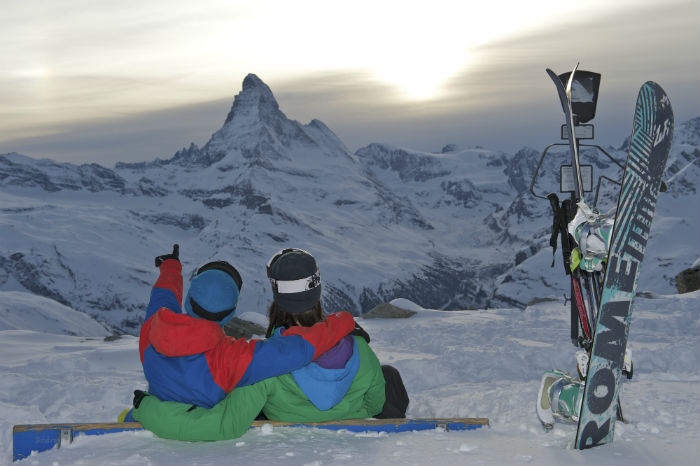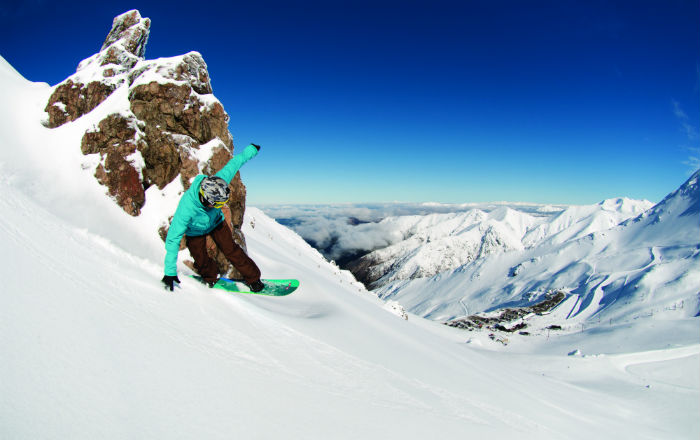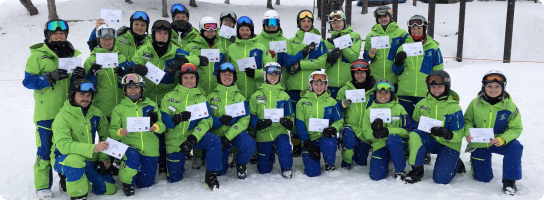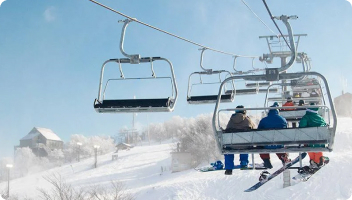If you have decided to work a season in the snow, the next step is to get on with the essential planning. You are probably wondering where to start? This article will guide you through the essential steps in order to work a snow season.
1. Early Planning
The earlier you start planning your season the better off you will be in terms of resorts open to you, the jobs available, your accommodation and the money you spend.
For northern hemisphere resorts, job advertisements go up as early as July for a November / December start. For southern hemisphere resorts, jobs typically go up around February for a June / July start.
Check out the individual resort pages for further information on hiring dates.
While most resorts will look for staff throughout the entire season as people quit or leave, it is true that more well-known resorts tend to fill their rosters quite quickly before the season starts. Therefore, if you have your heart set on a particular resort, you will need to comply with their hiring dates and put in your application in time.
Similarly with accommodation, the more well-known resorts will see an influx of seasonal workers each season looking for accommodation.
It pays to start looking early and, if possible, arriving early to start contacting landlords. Sure, you can squat in the hotel 20 miles from town, on no bus route, but is that really as cool as it sounds?
2. Choose Your Mountain
The first question is which part of the world you want to work in. Read the Seasonal Worker’s Global Resort Guide for a general overview of regions around the world.
Once you have selected the right country, the next question is at which resort you wish to work the season.
There are several considerations when deciding which mountain to choose:
- Do you want expert terrain or are you content to keep out of the rocks? No use choosing big mountain, huge back country, massive chutes and cliffs if you prefer groomers and cruisers. Likewise, backcountry is more or less popular depending on where you are. The countries that have embraced backcountry riding to the greatest extent include Canada, New Zealand and parts of the US. European riders are increasingly chasing backcountry, though the majority there still prefer on-piste groomers and the mountains reflect this.
- Are you after big powder? If you want powder, then Hokkaido in Japan, British Columbia and Alberta in Canada, and Utah, Colorado, California and Wyoming in the US are your places. While European mountains can receive large dumps of snow, the snow is, in general, less plentiful than these other places.
- Do you like to work at smaller operations with a tight community, or is a famous, ritzy resort your style? Small mountains are often overlooked, either because seasonal workers have not heard of them, or they assume they will not be fun because of their small size. However, small operations can be exceptionally fun due to the tight community which you join. Good examples of tight communities are the club fields in New Zealand.
- Are you after a big nightlife, or are you content with mountain serenity? In general après-ski is much more popular in Europe than in North America (with a few notable exceptions such as Whistler and Banff). You may wish to do some research on the nightlife at your resort. Of course, a smaller nightlife generally means a greater focus on getting up early to chase the powder.
Check out some resorts here.
3. Obtain Your Visa (if required)
Each country has its own set of requirements for working visas. It is important to apply with enough time in advance as the visa process can be lengthy.
The easiest countries for which to obtain a working visa include Canada, Australia and New Zealand. The US is generally much more restrictive for working visas. Japan also has a working holiday visa program.
European passport holders are able to work anywhere in Europe. However, it is much more difficult if you are arriving from outside the European Union. In this respect, France is the easiest European country for which to obtain a working visa.
Check out the individual country pages for further information on visas.
4. Apply For Your Job
Once you have selected your resort and got your visa underway, you will need to apply for the job you wish to do throughout the season.
Have a look at Jobs Available at Mountain Resorts to help you choose which job you would like to apply for on the mountain.
You generally have two options: (1) work for the resort directly or (2) work for a local business in town.
The major advantages of working for the resort generally include:
- Getting a free season pass
- Locking in a job before you arrive at the resort
- A bigger circle of workmates / friends and therefore ride buddies
- Free ski and snowboard lessons
- More stable income as your as your work shifts tend to fluctuate less than working in a bar, restaurant or shop
- Access to staff housing
- Discount food at the hill
The major disadvantages generally include:
- Most resort jobs are day jobs, whereas night jobs such as hospitality give you greater ride time over the season
- You can earn better tips in a restaurant or bar
- The work atmosphere can be more fun in a bar or club, plus working in a local business means nice discounts around town (especially in the bars)
- Less flexibility for shifts and jobs than working in a local business.
Head to the individual resort pages for further information on hiring dates and local job resources.
Job Programs
You may also want to investigate some of the organizations that source you jobs from your home country, such as Overseas Working Holidays, CCUSA or IEP. Many of the larger resorts in North America use these programs to fill up their rosters each season.
For a rather hefty fee (often up to $USD800), these programs will bring employers to your home country and set up an interview for you with them (basically guaranteeing a job unless you put in an exceptionally poor interview), and give you priority access to staff housing.
All this can definitely be done by yourself, although the $800 saved by not doing this often means arriving without a job – and that intervening period can be quite costly.
5. Prepare Your Snow Gear
The next step, after either receiving a job offer or deciding to look for a job once you arrive, is to prepare your gear. Remember that gear is always much more expensive at the resort than it is in surrounding towns. It is therefore a good idea to buy your gear before arriving at the resort to save money.
Snow gear is probably cheapest in the US at the moment, followed by Canada and Japan. Europe, Australia, New Zealand and other less well-known ski countries are more expensive.
Have a look at What Gear to Bring for a Winter Season for detailed information.
6. Book Your Travel and Transfers (if required)
As always, the earlier the better when booking flights.
While it is better to wait until you have secured a job, some people book flights regardless to get a cheap price knowing that they will at least be working somewhere in that particular country.
Fortunately, the winter season is generally the low season for tourists. The prices for flights will reflect that if you get in early.
Don’t forget to book the bus or train transfer early as well if going from the airport or another part of the country.
7. Save Money
You will DEFINITELY spend more than you think while you wait for your first pay check at the resort or in town. This is true even if you have a job lined up for your arrival.
If you do not have a job lined up, you should expect to be looking for a job for at least two weeks once you arrive, then add another four weeks on that before your first pay check arrives.
It is not uncommon for people to spend $USD3000 before the first pay check arrives. Your first up expenses will include:
- Transfer to the mountain from the airport
- The first 4 – 6 weeks accommodation plus bond
- Food – at mountain prices
- Going out at night and tips
- Gear you buy because it is awesome or you forgot something essential
- Items for your apartment
As you can see, costs can quickly add up.
8. Find a Place to Rent
Jobs with a resort often include staff housing which takes the hassle out of finding accommodation. While staff housing is not the most luxurious offering, there is usually a good vibe, you are with your workmates, you will be close to work and you are where the fun is at.
Returning season workers may be tired of staff housing and choose to find their own place. Also, it can be incredibly fun to get a crew of your friends together for the season in a share house.
If you are looking for your own place, local papers, online classifieds and pin-up advertisements around town are good places to start.
Have a look at the individual resorts pages for specific resources to find accommodation at each mountain.
9. Organize Paperwork
You will need to check specific requirements for working in each country. This will usually be completed by the employer, but it is worth keeping in mind nonetheless.
For example, you will usually be required to obtain a tax number and you may be required to get a police check.
10. Get Excited!
The best bit: 4 – 5 months of solid riding, powder, bluebird days, friends for life and parties into the night. Check out the recommended articles below.






